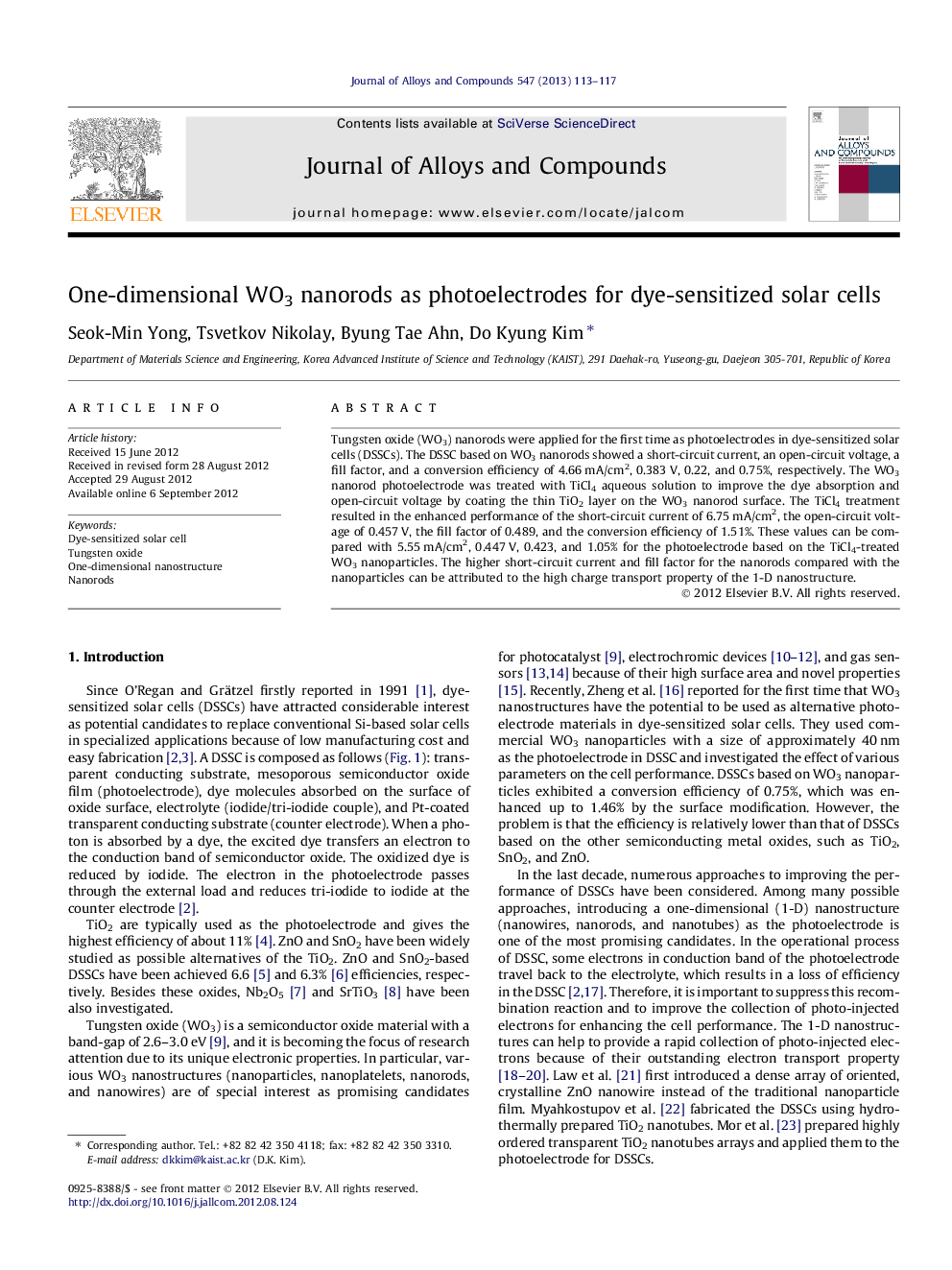| کد مقاله | کد نشریه | سال انتشار | مقاله انگلیسی | نسخه تمام متن |
|---|---|---|---|---|
| 1615216 | 1516346 | 2013 | 5 صفحه PDF | دانلود رایگان |

Tungsten oxide (WO3) nanorods were applied for the first time as photoelectrodes in dye-sensitized solar cells (DSSCs). The DSSC based on WO3 nanorods showed a short-circuit current, an open-circuit voltage, a fill factor, and a conversion efficiency of 4.66 mA/cm2, 0.383 V, 0.22, and 0.75%, respectively. The WO3 nanorod photoelectrode was treated with TiCl4 aqueous solution to improve the dye absorption and open-circuit voltage by coating the thin TiO2 layer on the WO3 nanorod surface. The TiCl4 treatment resulted in the enhanced performance of the short-circuit current of 6.75 mA/cm2, the open-circuit voltage of 0.457 V, the fill factor of 0.489, and the conversion efficiency of 1.51%. These values can be compared with 5.55 mA/cm2, 0.447 V, 0.423, and 1.05% for the photoelectrode based on the TiCl4-treated WO3 nanoparticles. The higher short-circuit current and fill factor for the nanorods compared with the nanoparticles can be attributed to the high charge transport property of the 1-D nanostructure.
► The present work reports for the first time on DSSCs based on 1-D WO3 nanorods.
► TiCl4 treatment of WO3 nanorods demonstrates the enhanced efficiency (about 2-fold).
► WO3 nanorods result in the higher efficiency (44%) than WO3 nanoparticles.
► This enhancement is attributed to the high carrier transport property of 1-D nanorod.
► The DSSCs based on TiCl4-treated WO3 nanorods exhibits efficiency of 1.51%.
Journal: Journal of Alloys and Compounds - Volume 547, 15 January 2013, Pages 113–117